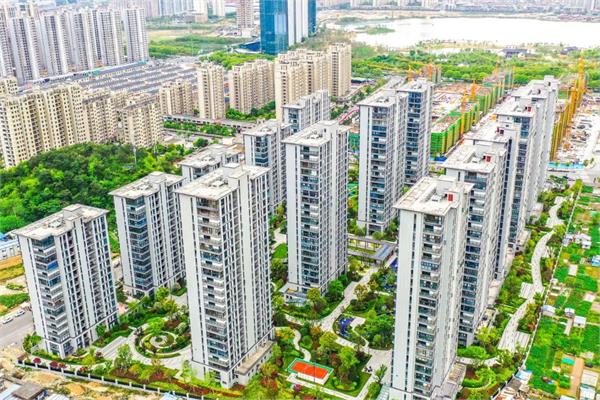
Developed by AkzoNobel’s Decorative Paints business, the new system features a radiative cooling topcoat and a thermal radiation barrier mid-coat, functioning like a high-tech sunscreen for buildings.
The paints and coatings supplier AkzoNobel has launched a pioneering thermal insulation coating system in China designed to cool buildings and significantly improve energy efficiency.
The advanced coating can lower a building’s surface temperature by up to 10% during hot summer months when compared to traditional exterior paints. It utilises passive radiative cooling – a process that emits thermal radiation into outer space – to deliver enhanced energy-saving performance, especially for refurbishing existing structures.
“This is a significant breakthrough in architectural coatings and opens new avenues for energy-efficient building renovations. We are committed to creating safer, more sustainable and more comfortable living environments, while contributing to China’s dual-carbon goals,” has stated Karen Yin, Director of Decorative Paints China North Asia and President of AkzoNobel China.
The mid-layer of the system incorporates cutting-edge aerogel insulation materials with extremely low thermal conductivity, effectively blocking heat transfer. The topcoat, meanwhile, is a next-generation heat-reflective paint with higher reflectivity and thermal emittance, which helps to radiate heat away and reduce urban heat island effects. Both coatings are low in volatile organic compounds (VOCs) and fully water-based.
“The science behind these ‘cool coatings’ may be complex, but the benefit is simple. Conventional coatings warm up in the sun because they absorb sunlight. Our heat-reflective coatings absorb much less, and this new system barely absorbs any at all – instead, it reflects and emits heat, keeping surfaces much cooler,” has added Karen Yin.
With the built environment accounting for an estimated 40% of global annual carbon emissions, AkzoNobel’s innovation could play a key role in redefining urban cooling strategies and promoting sustainable development in warmer climates.